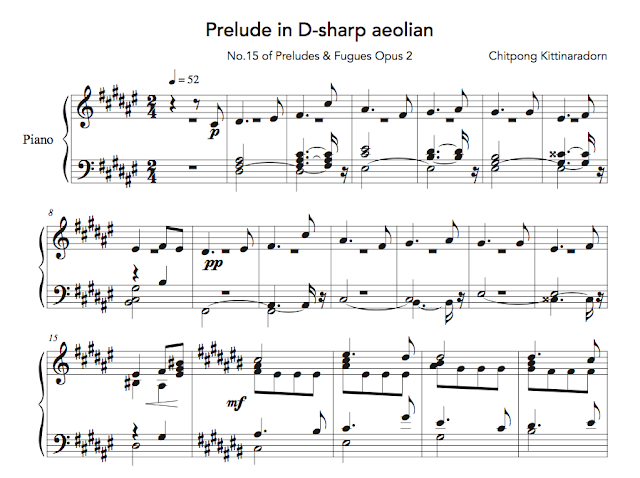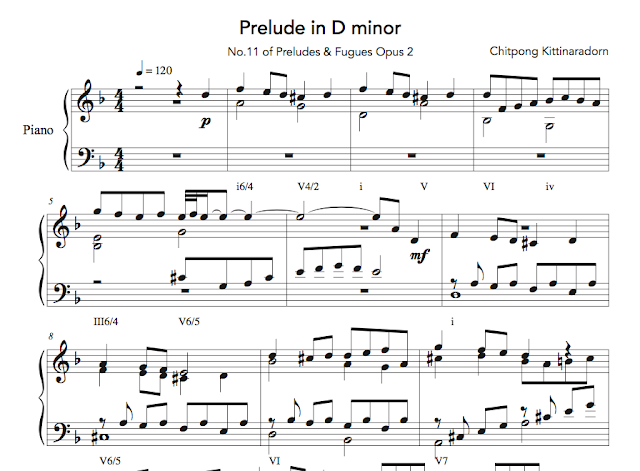Preludes & Fugues Opus 2: Prelude in D-sharp Aeolian

A study of Aeolian mode or 'natural minor key'. This mode lacks the leading tone on the seventh, therefore the rule of harmony has to be different from the usual minor key. Harmonic progressions in modal music tend to 'oscillate' near and around the tonic. This gives modes a unique soundscape which can be felt as archaic and unsophisticated, but when done carefully can be strangely charming.




